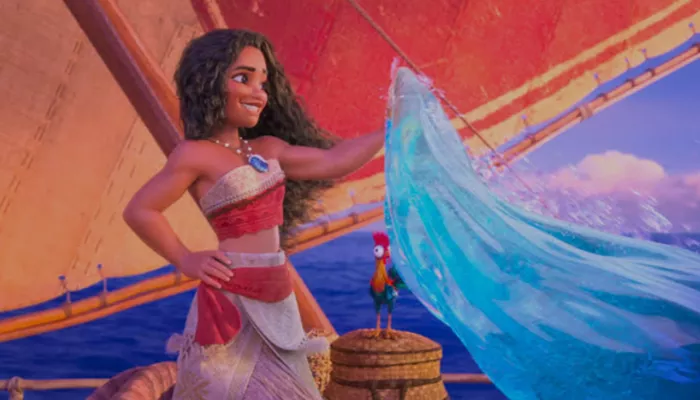When Disney announced Moana 2, fans were thrilled to see the beloved heroine return to the screen. However, early trailers and promotional images left many viewers asking a specific question: why does Moana look so different? From her facial structure and clothing to the overall animation style, it’s clear that Disney made deliberate choices to update her character. These changes are not just cosmetic — they reflect evolving technology, storytelling goals, and cultural perspectives.
This article will break down the reasons behind Moana’s visual transformation in Moana 2. We’ll explore the artistic, technical, and narrative factors behind her new appearance and connect them to broader trends in the film industry. This analysis will help fans understand how and why their favorite character is evolving while remaining true to her origins.
Advancements in Animation Technology
Improved Rendering Tools
Since the release of the original Moana in 2016, animation technology has significantly improved. Disney Animation Studios, known for pushing technological boundaries, now uses more advanced rendering systems. These tools enhance skin textures, lighting, and environmental details, making characters appear more lifelike.
Moana’s updated look benefits directly from this progress. Her skin shows more realistic shading and depth, her hair flows with better physics, and her eyes reflect light more naturally. These enhancements contribute to a more immersive visual experience for viewers of all ages.
Higher Frame Rates and Detail
In Moana 2, the animation is crisper, with higher frame rates that allow for smoother movements. This change influences how Moana’s expressions and gestures are perceived. What might look like a subtle difference in her facial shape is often due to improved detail in animation rather than an intentional redesign.
By making the animation more detailed, the studio allows the characters to convey emotion more clearly. This aligns with industry trends in cartoon movies, where quality and visual storytelling go hand in hand.
Aging and Character Development
Time Has Passed in the Story
Moana 2 takes place several years after the events of the original film. This passage of time is reflected in Moana’s appearance. She’s older, more mature, and has likely taken on new responsibilities as a leader or voyager.
Her new look signals this growth. Her body language is more confident, her attire more functional and refined. These design elements are meant to show character development, indicating that Moana has evolved from a curious teenager into a capable young adult.
Costume Design Reflects Growth
Moana’s clothing in the sequel is a mix of traditional Polynesian elements and more modern influences. This reflects both her heritage and her evolving identity. Her new costume is practical for voyaging and adventure, showcasing her role as a seasoned explorer.
Disney uses costume design as a storytelling device. By updating Moana’s attire, they visually express her growth and changing perspective — a common technique in animated movie plots.
Changes in Artistic Direction
New Creative Team, New Vision
While the core vision of Moana 2 remains tied to the original, the creative team behind the sequel includes new artists and directors. Each brings their own interpretation and aesthetic preferences. These new perspectives can influence everything from lighting and textures to character proportions.
Changes in Moana’s facial features, for instance, may be subtle results of different artistic choices. Her face may be slightly slimmer or more expressive due to new animation tools or character modeling decisions.
Focus on Cultural Authenticity
Disney has made a concerted effort to increase cultural authenticity in its animated films. In Moana 2, the studio collaborated with cultural consultants to refine aspects of Moana’s design, making her more accurately representative of Polynesian culture.
This includes changes in her clothing, jewelry, and even skin tone. These updates aren’t just visual; they reflect a deeper respect for cultural heritage and align with trends in the Disney Animation Studios approach to diversity and inclusion.
Audience Expectations and Market Trends
Modern Audiences Want Realism and Depth
Today’s moviegoers expect more from animated films. They look for realism, emotional depth, and accurate cultural representation. Disney responds to these expectations by updating character designs to feel more authentic and relatable.
Moana’s new look reflects this shift. Her features are less stylized, closer to realistic human proportions. This change aims to connect with audiences on a deeper emotional level while keeping her iconic traits intact.
Competitive Pressure in the Animation Industry
With studios like Pixar, DreamWorks, and Netflix constantly raising the bar, Disney must innovate to stay ahead. A refresh in character design helps the studio remain competitive in the crowded movie genre landscape.
Moana’s updated design makes her stand out in promotional material, trailers, and merchandise — all key elements of maintaining relevance in a global market.
Symbolism and Storytelling
Visual Metaphors for Inner Change
Character redesigns are often more than aesthetic upgrades — they symbolize personal growth. Moana’s new appearance acts as a visual metaphor for her journey from a novice wayfinder to a confident leader.
Her design evolution underscores her emotional and psychological development, which is central to the film’s message. These choices help deepen the narrative, turning appearance into storytelling.
Stronger Visual Identity
In a franchise, character identity is crucial. While Moana’s appearance has changed, key elements remain — her flowing hair, her expressive eyes, her adventurous spirit. These anchors allow audiences to recognize her while accepting her transformation.
Disney’s challenge was to balance innovation with familiarity. The result is a Moana who feels both fresh and faithful, a character redesigned to resonate across cultures and age groups.
Conclusion
Moana’s new look in Moana 2 isn’t just a visual upgrade — it reflects the evolution of animation technology, audience expectations, and cultural storytelling. Her redesign serves as a bridge between the past and the future of Disney animation.
Whether you’re drawn to the improvements in rendering, the deeper cultural nuances, or the storytelling embedded in her attire and expressions, there’s no denying that Moana’s transformation is thoughtful and intentional. It’s a testament to how animation, like Moana herself, continues to grow and explore new horizons.

